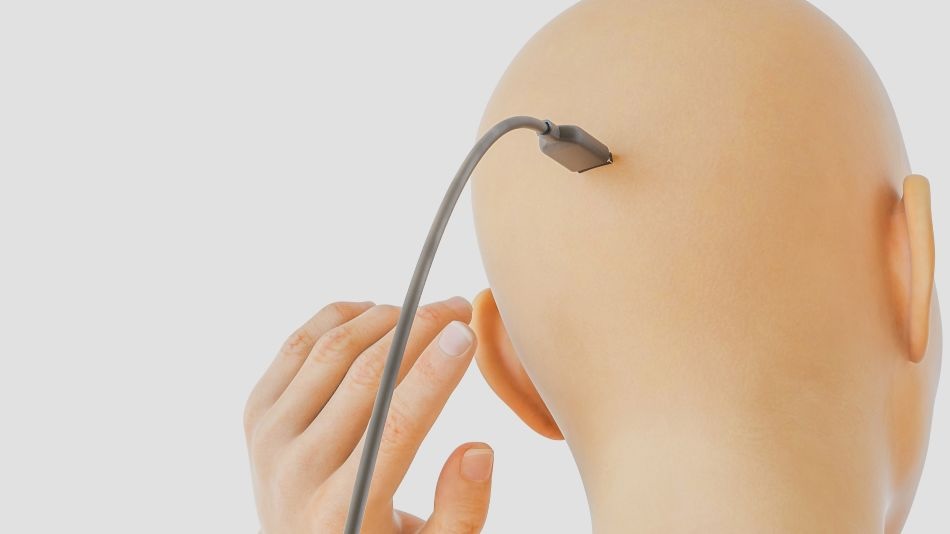Powering Wearable Devices Via Skin
Powering Wearable Devices Via Skin


A new approach has unlocked a way to use the human body itself to deliver power to wearable devices by transmitting electricity over the skin.
What began as a curiosity has developed into a larger experiment to prove that skin can be used as a highway to transfer electricity to power wearable devices.
Carnegie Mellon researcher Andy Kong and his colleagues uncovered that a device placed on the body with a power source, such as a battery, can create an electric signal that can be transferred over skin to other battery-free wearable devices.
For example, power can be drawn from a smartwatch, which can then be transferred over the skin to devices such as a wearable fitness device or smart ring. The devices require only a receiver to capture the power.
“I think we need a new way of powering these devices and I think it’d be really cool if you didn’t have to charge them,” Kong said.
The body is conductive at higher frequencies than it is at lower frequencies, making it a great mechanism to transfer power. The installation would involve injecting a “really high frequency RF wave into your skin somewhere,” he said.
More for You: Powering Electronics with Human Movement
This high-power transmitter draws power from a source attached to the body, such as a battery-powered smartwatch. The transmitter then generates a 40 MHz RF signal that then transfers power over the skin’s surface to other devices attached to the body.
“The transmitter has to be powered, so it has to have a battery. I figure this is not a problem because you’re always going to have a battery on you. And then all the receivers are powerless, so they will collect it from just contact,” Kong explained.
It is possible to transfer power over the air via RF signals, but there is less loss if power is transferred via the body, he said.
The researchers published a paper on their findings, “Power-over-Skin: Full-Body Wearables Powered By Intra-Body RF Energy.” Co-authors are Daehwa Kim, a doctorate student at Carnegie Mellon, and Chris Harrison, an associate professor at the university’s Human-Computer Interaction Institute.
For this work, the team built on research going back to the 1990s. Kong began his experiments over winter break at his parents’ house and then at CMU’s lab.
Discover the Benefits of ASME Membership
The basis of existing research was simple: the transmitter has a battery, emits a signal that enters the skin, travels to the receiver, which then powers the device. It was a matter of putting the theory to real-world tests.
“If it doesn’t work, you lose an hour. If it does work, you have a paper,” Kong said.
Published papers stated that 2 microwatts could be transmitted from head to toe. But previous researchers didn’t “seem to try super hard to transfer power very far,” he continued. “I think maybe a Casio watch runs on 2 microwatts. Anything bigger, like a fitness tracker, uses a milliwatt. I wanted to just see how high we could get that number.”
The researchers got to work by turning a few knobs, increasing the power transmission and finetuning the circuitry. They used newer power-efficient microcontrollers, switched out components, and added new circuits to see how it worked.
“Whatever was the weakest link I would spend time on, and then once we achieve two to three times power increase, I would just switch to something else and think more about it,” Kong added.
Check This Out: Wearable Patch Reads Muscle Activity Remotely
Practical experiments uncovered the relationship between a wearable device’s location and the possible distance power could travel.
The highest power generated was 1.53 milliwatts from left wrist to left index finger. The lowest power was 5.3 microwatts from the left wrist to right ankle, which was the longest distance measured.
“For short ranges, like from the wrist to the fingertip, if your smartwatch powered a smart ring, then we can transfer 3 milliwatts. It depends on a lot of different factors. Really far distances, like arm to arm, we can get a few hundred microwatts,” Kong said.
The higher power transfers were because square waves—which transfer signal over multiple frequencies—generated 75 percent more power compared to sine waves, which transfer over single frequencies.
Multiple methods measured these power transfers, including blinking LED lights attached to circuit boards doubling as wearable devices on skin.
“Just from the rate of blinking, you could sort of tell intuitively what is actually increasing your power transfer. For us, the square wave was very helpful,” Kong explained.
Electric shock was never a threat during the experiments either—during testing, even single-point skin contact with a transmitter wave produced no perceptible sensation of heating or pain, according to the paper.
Agam Shah is a business and technology writer in Phoenix.




